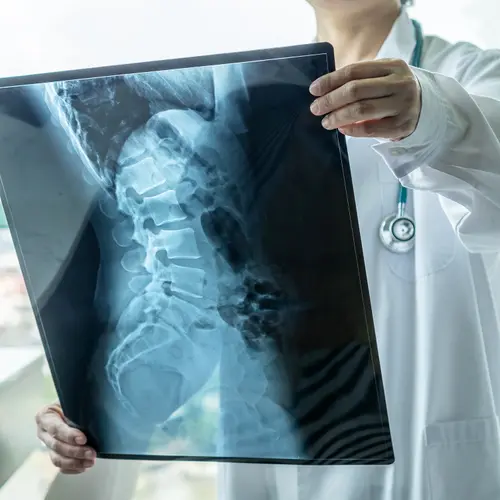Medication is often one of the first treatments for ankylosing spondylitis (AS). But many nonmedication therapies also may help ease your AS symptoms.
Exercise
Even with major medical advances for AS, exercise continues to be a key treatment option. It can help at every stage of the disease. Studies have shown that regular exercise lessens inflammation and AS symptoms. Your doctor or physical therapist can suggest best exercises and help you create a plan that fits your needs.
You may work out at home. Joining a group may help you stay motivated. Swimming helps with spine, neck, and hip joint flexibility. Deep breathing exercises can help you expand your lung capacity. To ease pain and stiffness, try stretching exercises.
More exercises to help with flexibility and posture:
- Walking
- Yoga
- Tai chi
- Strength training
- Aerobics
For any exercise, keep these tips in mind:
- Start slow and build up
- Make it part of your routine
- Combine it with workouts in warm water (hydrotherapy) for better results
- If it’s painful, talk to your doctor
Physical Therapy
The goal here is to keep you mobile and your pain under control. You work with a physical therapist to learn the best exercises to do to help strengthen and stretch your muscles. It is important to work with someone who is trained to support a person with AS. They can tailor a treatment plan for your condition and skill level.
Your physical therapist can create a routine of exercises, stretches, workouts with equipment, and hands-on treatment by the therapist. This treatment may not prevent AS from getting worse but may lower symptoms.
Occupational Therapy
AS can affect almost every facet of your life, at home and at work. Occupational therapy can help ease pain and bolster your independence. You can learn about tools and techniques so you can cook, shower, clean, and handle other daily tasks more easily. An occupational therapist also can show you how to make changes to your home to help you get around. You may need a bench in your shower for balance or a support device such as a cane to protect your joints.
Other ways occupational therapy can help include:
- Pinpoint the obstacles in your everyday activities
- Learn how to use assistive devices
- Improve your sleep quality with changes to your daily habits and bedroom
- Learn ways to save your energy with strategic rest breaks and pacing
- Practice relaxation techniques and mindfulness to improve your mental health
- Find hobbies that provide joy and meaning
Hydrotherapy
This involves exercises that you do in warm water. Hydrotherapy often is used with exercise and may help to lower inflammation, but more studies are needed. The focus is on slow, controlled movements that allow your muscles to relax. It can also build up strength in your muscles and lower the pain in your joints so they move more easily.
Chiropractic
This nonmedical therapy is based on manipulating your body to help spinal motion and function. That may relieve pain in the joints and muscles. The chiropractor uses their hands or a device to put pressure to your spine to move the joints. Some studies have found that chiropractic sessions may slightly improve flexibility. But even small gains may help those with AS prevent disability and improve their quality of life. If you have spinal fusion, you should not try this treatment.
Acupuncture
This traditional medicine has been around for 3000 years. Acupuncturists often insert 5-20 hair-thin needles through your skin at different pressure points based on the location of your pain. A typical session takes between 30-60 minutes. This practice allows your brain and spinal cord to release feel-good hormones to the rest of your body. People with AS may see a relief in their symptoms, mainly less pain.
Massage Therapy
It may relieve pain and stress, and in the short term improve flexibility. A certified medical professional manipulates the soft tissues in your body, including muscle, ligaments, and skin. Be sure to see a massage therapist who knows how to work with someone with AS. The key will be to avoid pressure on sensitive joints or muscles. Massage sessions also may make you feel comfortable and connected. But not everyone responds the same way to massage therapy.

